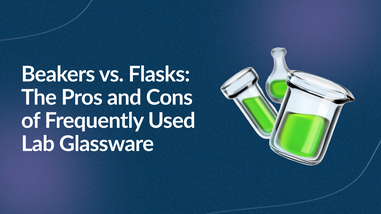- No products in the cart.
Solder is used on printed circuit boards that contain many electronic components. The components are held onto the board by solder which creates a strong bond between the components and their pads. In order to build and maintain an efficient circuit, it’s important to be able to connect and remove connections.
What is Desoldering Used For?
Soldering is a technique used for attaching two pieces of metal together. This is done by melting solder or metal between the two metal parts or components. However, there are times when you may want to remove the unwanted solder, especially if you have a faulty component and need to replace it. Desoldering is used for the removal of solder and the associated component from a circuit board for repair, troubleshooting, replacement, or to salvage old components. Desoldering is removing the solder from components to either correct or release the component.

What Are the Steps in Desoldering?
Desoldering is the opposite of soldering and involves two main steps. The two main steps consist of heating up the solder and removing it. To heat up the solder, you can use either a soldering iron or a heat gun. To remove the solder, you can use a solder braid or wick, or a desoldering pump. The good news is that you can use the same tools for desoldering that you used for soldering.
First, you dip the soldering iron in flux and heat the iron to the melting temperature. The iron consists of a metal tip, a heating element, and an insulated handle. The tip transfers the heat from the heating element to the work. The copper interior acts as a thermal conductor. With the iron, nudge and press the solder until the solder is completely melted.
Then depress the plunger on the desoldering pump and place the pump’s tip as close to the solder as possible. In order to prevent the solder from cooling and freezing again, leave the soldering iron in place. To suck up and remove the solder, press the desoldering pump button. If you use a wick, the wick will soak up the melted solder from the PCB.
What Are the Two Techniques That Can Be Used to Desolder a Component From a PCB?
Components can be desoldered from a PCB either manually or with a desoldering station. With the manual technique, you would use a soldering iron and either a desoldering pump or wick. The iron melts the solder on the joint and the pump or wick will either vacuum or soak up the solder from the PCB. This technique is cheaper but requires a steady hand. However, this is not a good option for desoldering SMD components.
Using a desoldering station is another technique. The station consists of soldering tools connected to a control unit and desoldering tools. The station also comes with a soldering iron tip, a foam grip, a soldering iron holder or stand, temperature adjustment, a display, and a desoldering vacuum. The desoldering station automatically heats the solder joint and sucks up the melted solder. This is the more professional and expensive option. This technique is ideal for desoldering SMD components.
What is the Best Temperature For Desoldering?
The temperature depends on if the solder is lead-based or not. For lead-based solder, a good temperature to start with is 600°- 650°F (316°- 343°C). For lead-free solder, start with 650°- 700°F (343°- 371°C). Make sure the tip is hot enough to efficiently melt the solder but not too hot to damage the components.
What is Soft Soldering and Liquid Solder?
Soft and liquid are two types of solder. Soft soldering is an alloy of tin and lead that melts when the temperature is below 700° F. When melted, it’s used to join metallic surfaces, particularly small intricate parts. Liquid solder is a water-resistant, heavy-duty, and strong adhesive that bonds components to the board. It contains metals that create a conductive joint to establish electrical connections between metal surfaces. Liquid solder is ideal for low temperature soldering and for the wave soldering method.
Lab Pro offers a large variety of desoldering tools. For over 40 years, Lab Pro Inc. has been committed to delivering the highest quality desoldering tools, hand tools, chemicals, lab equipment, distance learning kits, lab supplies, and cleanroom PPE apparel to medical device companies and laboratories worldwide. To learn more, visit the biggest Lab Supply showroom in California, or contact us online or at 888-452-2776.












































I greatly value the information you share.
https://advancetech.co.in/product-category/soldering-desoldering-rework-solutions/